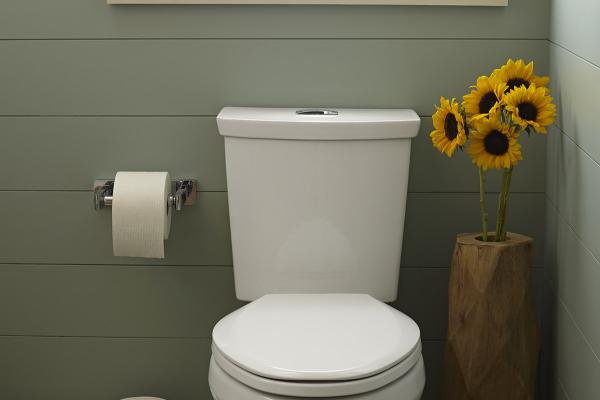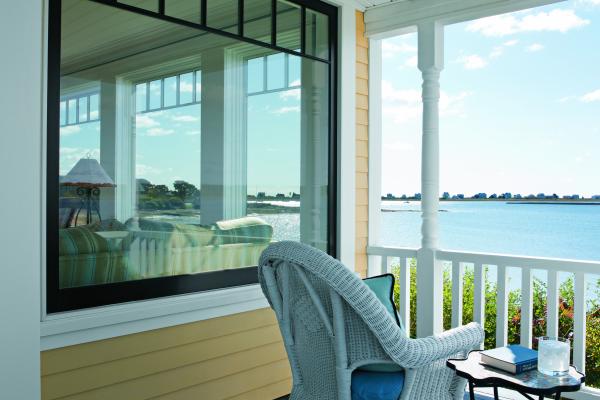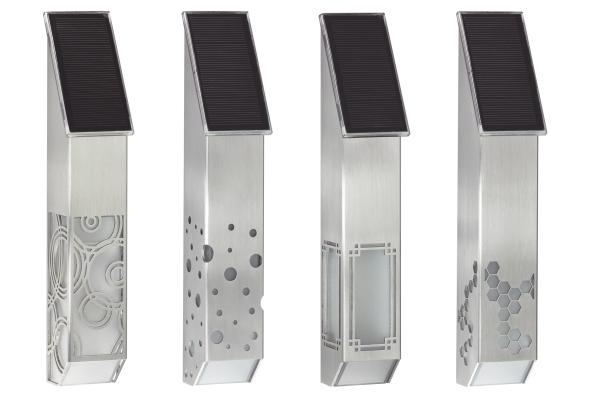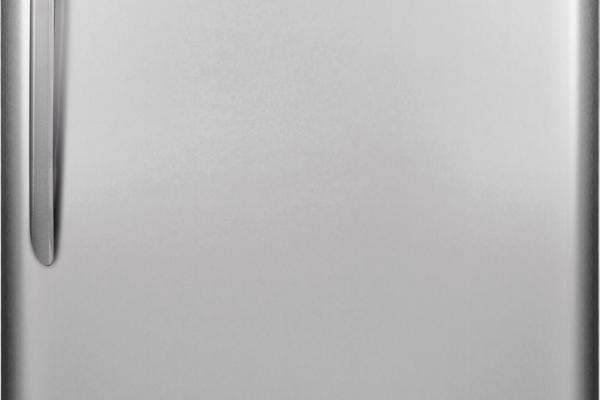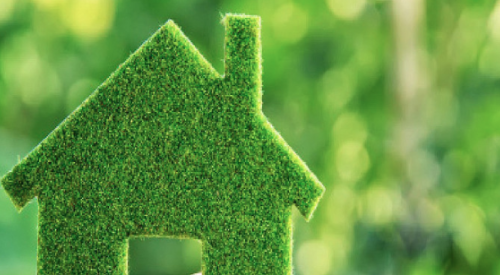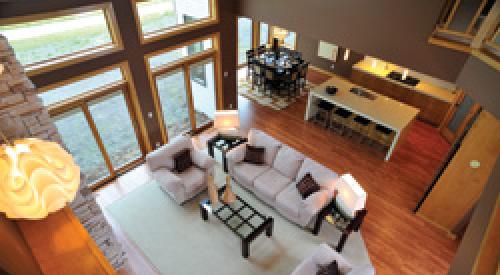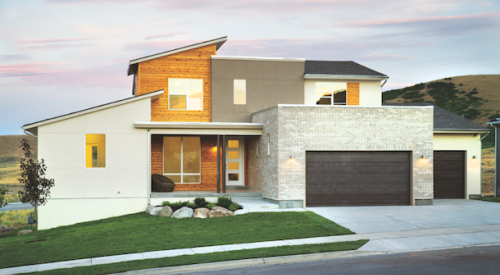Ask anyone—pro or consumer alike—for a definition of “green” products and you’ll likely get a hundred different answers. To some, it’s all about raw materials. To others, it’s solar power. For many, resiliency is No. 1.
But in reality, it’s all of those definitions and many more. In a general and broad sense, green products today categorize a range of materials that have a lower impact—or, even better, positive impact—on the planet, on human health, and on our social fabric. This broad scope encompasses everything from recycled content to products that reduce energy use and greenhouse gas emissions, along with products that are fully recyclable and last a long time, materials that do not emit harmful chemicals, and materials that don’t have detrimental effects on the people who make them.
Regardless of the definition, evidence shows that interest in green building continues to rise.
The 2015 Green and Healthier Homes Smart Market Report from Dodge Data Analytics and the NAHB found that 31 percent of home builders are building more than 60 percent of their projects green, and 51 percent expect to be building to that level by 2020. “These findings demonstrate that home builders still see green as an important trend in their industry, and one to which they need to commit,” the report stated.
But which component of green building matters most? It all depends upon whom, where, and when you ask.
More for the Money
First and foremost, it’s important to recognize that it’s never just about the products. Green products are a component of a green-built home, but that home must be well sited, well designed, and well constructed based on sound building science principles and function as a whole system.
“All the ‘green’ products in the world will not make a poorly designed and built home green,” says Carl Seville, principal at SK Collaborative and a green writer and blogger. “It’s just lipstick on a pig. Green products can enhance the performance/value/greenness’ of a project that does meet the basic criteria, but if a project is not well conceived or constructed, no amount of green products will make it successful.”
And because many buyers are focused on what they can see—the granite countertops and soaking tubs—savvy pros must consciously and clearly communicate the importance of robust building systems and, perhaps more importantly, educate buyers about what a tightly sealed envelope and a moisture-resistant home means for their families and their wallets over time.
Indeed, return on investment—whether from proper air sealing or a solar panel—has become a critical component to consumers’ buy-in. In the heyday of the mid-2000s, any manufacturer with recycled content was touting itself as environmentally friendly. But buyers soon proved that warm fuzzies weren’t enough—and most weren’t going to pay more just to keep a few pounds out of the landfill. A Green Builder Media survey conducted in 2013 indicated that the majority of consumers don’t incorporate sustainable ideas because green products/systems are too expensive. Yet at the same time, the majority of those respondents want to live a greener life and believe that energy efficiency and durability features would positively impact the sale of their home.
Products that save or generate energy offer a payback that consumers can understand, particularly when working with builders that know how to communicate future savings. Energy-efficient HVAC, windows, and other systems can provide those types of expectations.
Even insulation and air sealing, though less sexy and hidden behind the walls, translate into something tangible that buyers can understand and appreciate.
“Energy efficiency is something that homeowners and builders are keyed into, and I think it’s important to them,” says Jon Phelps, public relations and brand content manager for Andersen Windows. “How they go about achieving that, there’s a multitude of ways of talking about that.”
Programs like Energy Star take the guesswork out of the equation, providing not only verification of energy claims, but information on monetary savings that is easy to interpret. What’s more, the Energy Star program raises the bar on efficiency requirements every few years, driving innovation and optimization. And it shows: A recent survey by the Consortium for Energy Efficiency found that 45 percent of U.S. households purchased an Energy Star-certified product in the past year, and 77 percent of Energy Star purchasers say the label was influential in their purchasing decision.
Regardless of buyer preference, in some areas there’s little choice in the matter. “The regulatory environment has required builders to figure out how to include more green products so they can continue to meet increasing energy-efficiency requirements of the house, regardless of what the market is doing,” says Michelle Foster, vice president of innovation services at the Home Innovation Research Labs. “Energy efficiency continues to be something that builders are having to figure out to achieve in a cost effective way and tighten up that envelope even more.”
Improving Performance
Another area driven by both regulation and innovation is light bulbs, which have seen a tremendous evolution over the past decade as CFLs replaced incandescents and now LEDs are proving superior to CFLs.
When lighting was primarily made up of incandescent bulbs, they accounted for 20 percent of a typical home’s electricity, says Terry McGowan, director of engineering and technology at the American Lighting Association. Now, with the onslaught of more efficient options, that figure is down to 12 percent and still dropping. “This has made a big difference, and it’s something people can see in their electric bills.”
A 13-watt LED will save $5 to $5.50 a year on energy, says John Strainic, chief operating officer for GE Lighting, providing a one-year payback on a bulb that’s going to last 13 to 20 years. Green products “absolutely matter,” he says. “In fact, what we’re going to see is it will matter even more. I always talk about CFLs as the light bulb everyone loves to hate. … LEDs bring all that energy savings and address some of the challenges that CFLs had.”
Because, along with money, nothing turns off consumers to green products more than poor performance. Light bulbs are one of several high-profile categories that experienced growing pains on the path to green but are coming out on the other side victorious.
CFLs were the first widely accepted alternative to inefficient incandescents, but they lost consumer confidence because the color was displeasing and they didn’t dim well. Though some CFLs have improved, LEDs are quickly taking over as the future of lighting because along with uber efficiency, they offer installation flexibility, a range of color temperatures, and dimming capabilities.
“We see LEDs expanding very rapidly because of experience and affordability,” says Strainic. GE is so confident, in fact, that it recently announced it is phasing out all of its CFLs for LEDs.
Water-conserving products faced a similar evolution. When low-flow fixtures first hit the scene, they were fraught with challenges—from toilets that took multiple flushes to showerheads that couldn’t rinse the shampoo out of your hair. Thankfully, the technology behind toilets, showerheads, and faucets have all improved to a point where consumers aren’t afraid to use them, and WaterSense certification provides guarantees of not only savings but performance.
Monetary factors also have driven a renewed demand for frugality—for buying products that are durable and long-lasting. A product that lasts doesn’t waste raw materials, and it saves the homeowner money. “From a green perspective, a well-crafted window is the greenest window of them all because over time it performs over and over again,” Phelps says. “It justifies the upfront cost if you consider the longevity of a well-made window.”
Understanding Ingredients
Beyond money, consumers seem to be motivated by how homes (and the products in them) can affect their family’s health. One need only look at the rising popularity of brands such as Seventh Generation and The Honest Co. to see that interest in healthier products is on trend. In home construction, that translates into products that do not affect indoor air quality or to ventilation that brings fresh air into the home, among others.
“The healthiness of the home, from a consumer perspective, is much more important,” says Foster. “I think there is growing awareness of what makes a healthy home and defining that better. That’s an area I think consumers are interested in. It’s more in its infancy than energy efficiency and water efficiency.”
In the Dodge/NAHB Smart Market Report, 83 percent of builder and remodeler respondents indicated they believe consumers will pay more for healthier homes—more than the number who believe consumers will pay more for a "green" home. However, “at least one in nine recent home buyers interviewed expressed a concern about how a home could be demonstrated to be healthier and felt that this categorization was more nebulous,” the survey said. “Home builders and remodelers seeking to capitalize on the interest in healthier homes must be prepared to specifically address how their homes are healthier.”
Education again becomes key, helping buyers better understand the ingredients in products and the benefits of building systems.
The green market didn’t really serve the concerned parent five years ago, notes Stacy Glass, vice president of built environment for the Cradle to Cradle Products Innovation Institute, which administers the Cradle to Cradle Certified products program. “They were asking about chemistry, and the green marketplace couldn’t answer their questions—‘What’s in my product?’ ‘We can’t tell you.’ ‘Is it safe?’ ‘We can’t tell you.’”
Now, Glass says, “The green marketplace is starting to respond to years of inquiry from thoughtful homeowners who ask what’s in the products and are they safe.”
She points to Cradle to Cradle Certification, which has a material health component, as well as programs such as EPA’s Safer Choice label, as tools that are making it easier for homeowners to better understand what products are made of and to make healthier choices.
“Builders are looking for ways to add value and to distinguish themselves in the marketplace. And I think health and wellness is a way to do that,” Glass says. “And products are just a piece of that. If builders want to find competitive advantage in designing homes with ideal daylighting, connection with nature, and other basic principles of health and wellness, I think that’s a way a builder can offer real value and have a competitive advantage.”
Backing Up Claims
Certification programs, from single-attribute Energy Star to multi-attribute Cradle to Cradle and Pharos, are helping to address another component that impacts consumers’ desire for green: trust. A decade ago when every product manufacturer was jumping onto the green bandwagon, greenwashing was rampant. Trusted labels help verify claims and provide buyers with peace of mind.
Multi-attribute programs also may help buyers avoid selecting products that are eco-friendly on one category but detrimental on another. “Many products that claim they are green have bad attributes,” says Seville, such as those whose raw material extraction causes health problems in workers. “While they don’t have any negative effect on the end user and they do have some positive attributes on a building, they can have a negative impact on society in general.”
Building trust through verified claims is often just as important in ensuring consumer trust in green products as price and ROI.
“Consumers are becoming more sophisticated, and I see them taking a holistic approach,” Glass says. “What is it made of, how is it made, and what is the impact on my community and the environment?”



